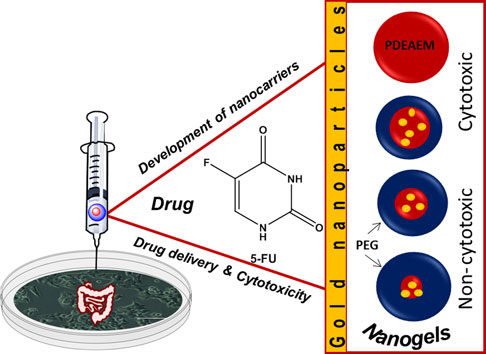Article contents
On the cytotoxicity of a cationic tertiary amine PEGylated nanogel as nanocarrier for anticancer therapies
Published online by Cambridge University Press: 07 June 2018
Abstract

Cationic PEGylated nanogels based on poly(N,N-diethylaminoethyl methacrylate) (PDEAEM) were prepared varying the ratio of PDEAEM to polyethyleneglycol (PEG), the initiator, and the crosslinker; resulting in nanogels of different surface charge (zeta-potential) and hydrodynamic diameter. Nanogels without PEG (100% PDEAEM) and nanogels containing 45 wt.% of PDEAEM were cytotoxic to human colon cancer cell line (HCT-116). Nanogels containing 20 wt.% or less of PDEAEM provided with a PEG shell were non-cytotoxic even at a concentration of 1 mg/mL. These nanogels loaded with 5-fluorouracil turned to be cytotoxic provoking cell death by apoptosis. Nanogels were also studied loaded with gold nanoparticles.
- Type
- Research Letters
- Information
- Copyright
- Copyright © Materials Research Society 2018
References
- 4
- Cited by





